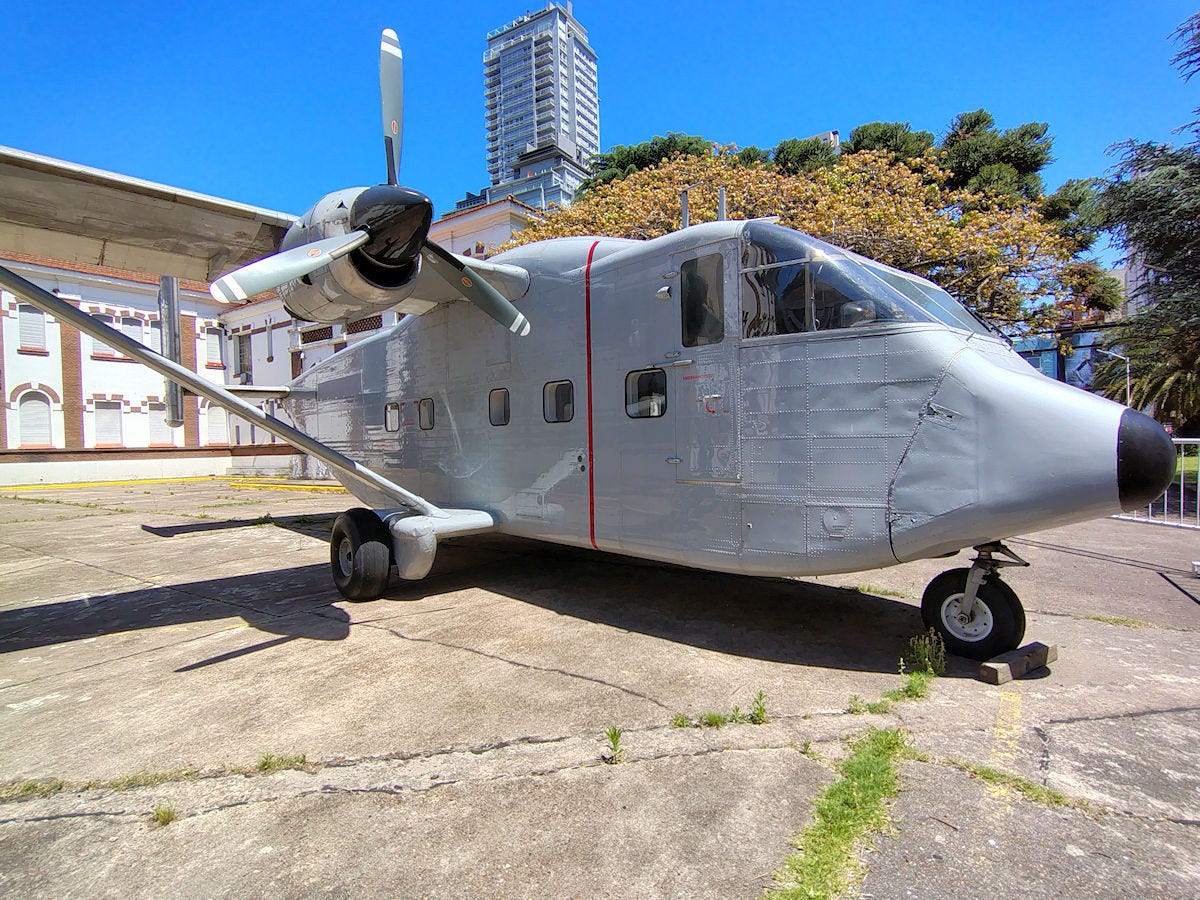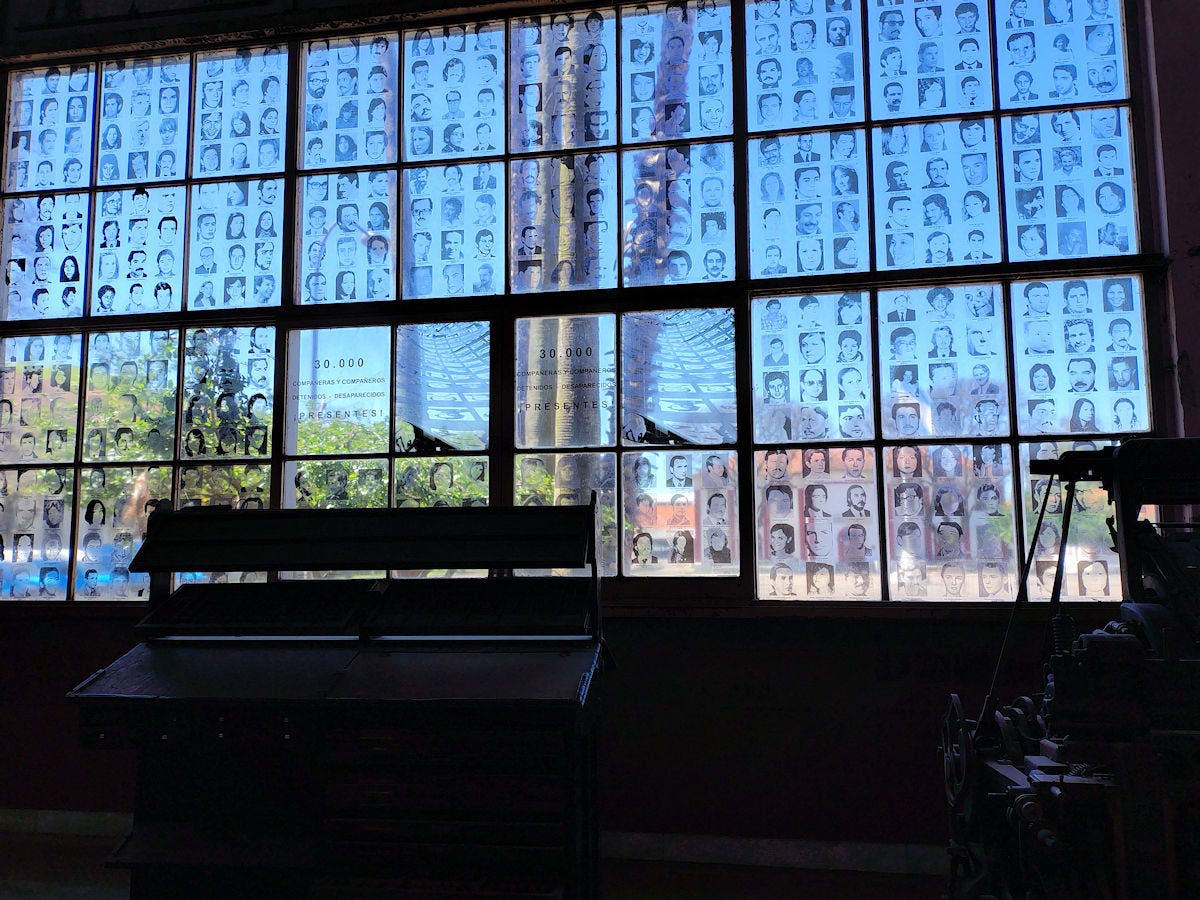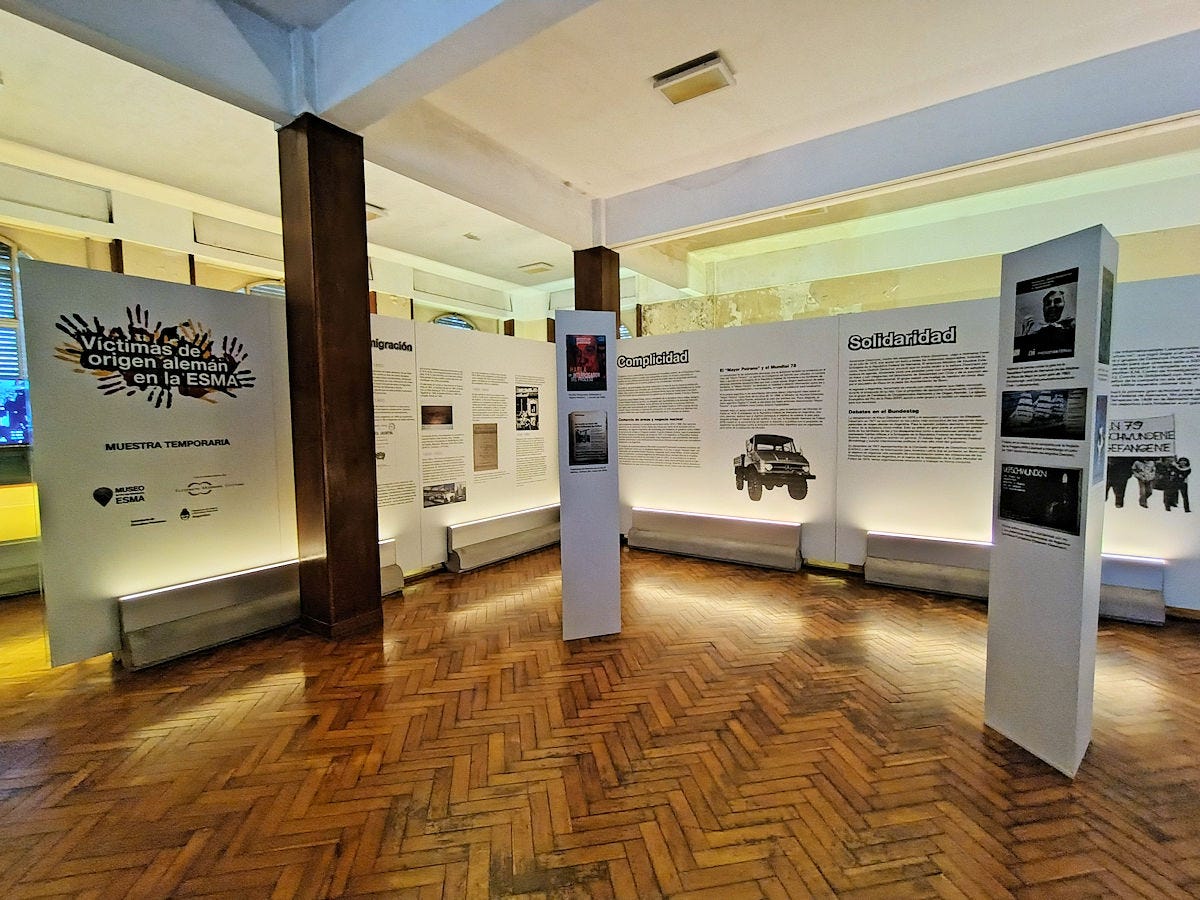In The Navy
In which I visit the ESMA memorial site.
Not food or wine today, but a little history, as best I understand it:
The "Dirty War" in Argentina, from 1976 to 1983, was a brutal period marked by a military dictatorship under the leadership of Jorge Rafael Videla and other junta leaders. Following a coup that ousted President Isabel Perón, the regime initiated the "Process of National Reorganization," initiating a campaign of state terrorism against suspected dissidents, left-wing activists, intellectuals, and anyone perceived as opposing the government’s authoritarian rule. The military sought to eliminate what was considered “subversion” through intense repression, resulting in widespread human rights abuses, including kidnappings, torture, and extrajudicial killings. Estimates suggest that as many as 30,000 people were “disappeared” during this period, a term that refers to the covert abduction and elimination of individuals without legal proceedings or accountability. The end of the war came with the return to democracy in 1983, leaving lasting scars on Argentine society and a demand for justice that continues to influence the country today.
I have, since moving here, been continually surprised by how little of the history, even recent history, of Argentina, and other Latin American countries, we were taught in school. The period we’re looking at here was basically the time I was in undergrad and grad school, and little, if any of this, seeped into my consciousness at the least. Looking just at the New York Times archives, it looks like, on average during the seven year period, they published only around a dozen articles a year on the topic, a good number of them guest opinion columns.
One of the most notorious centers of detention and torture during the Dirty War was the Escuela de Mecánica de la Armada (ESMA), or the Navy Mechanics School, located in Buenos Aires. Initially a training facility, ESMA was repurposed into a clandestine detention center where thousands of "disappeared" individuals were held, tortured, and, in many cases, eventually killed. Prisoners were often drugged and thrown into the sea in what became known as "death flights," a horrific method the regime used to ensure bodies would never be recovered. Survivors of ESMA, though few, have provided critical testimonies that have helped expose the extent of the atrocities committed within its walls. The ESMA complex is now a museum and a UNESCO World Heritage site, serving as a reminder of the atrocities committed during the Dirty War and honoring the memory of the disappeared. The legacy of ESMA and the disappeared continues to be a focal point in Argentina's efforts to reckon with its past and ensure justice for the victims.
The ESMA site is located in the far north barrio of Nuñez, and consists of two dozen buildings that you can wander through. While many of them have curated exhibits about the Dirty War period and ESMA’s role, some of them are just… buildings. A few have been converted to offices. It seems that whichever agency is in charge of the site has decided to more or less let nature take its course, and the grounds are, mostly, overgrown with weeds, and the buildings are in deteriorating condition. Entry is free, most signage is only in Spanish, though the more major exhibits are translated to English as well. There is an app that they have information tied to QR codes scattered throughout the buildings that you can get brief audio descriptions, available in several languages. At the far back of the complex is also a museum dedicated to the Malvinas War. To me that seems a bit disrespectful, they are unrelated, and while both may honor those who’ve died, ESMA was about people who died at the hands of the State, while the Malvinas War dead were soldiers sent to fight an unnecessary battle as a way of distracting the populous from paying attention to domestic economic and social problems.
I’m going to leave the rest of this in just pictures. Visiting the site is a somber and sobering experience.






















Thank you so much for this. I will seek it out. I don’t think there’s a lot of publicity about this place.